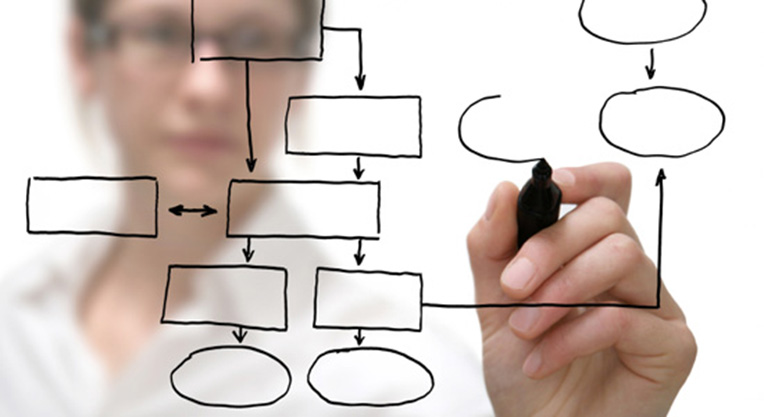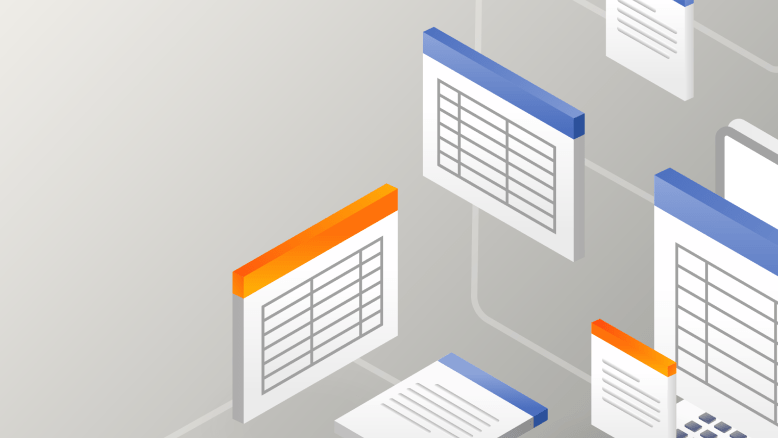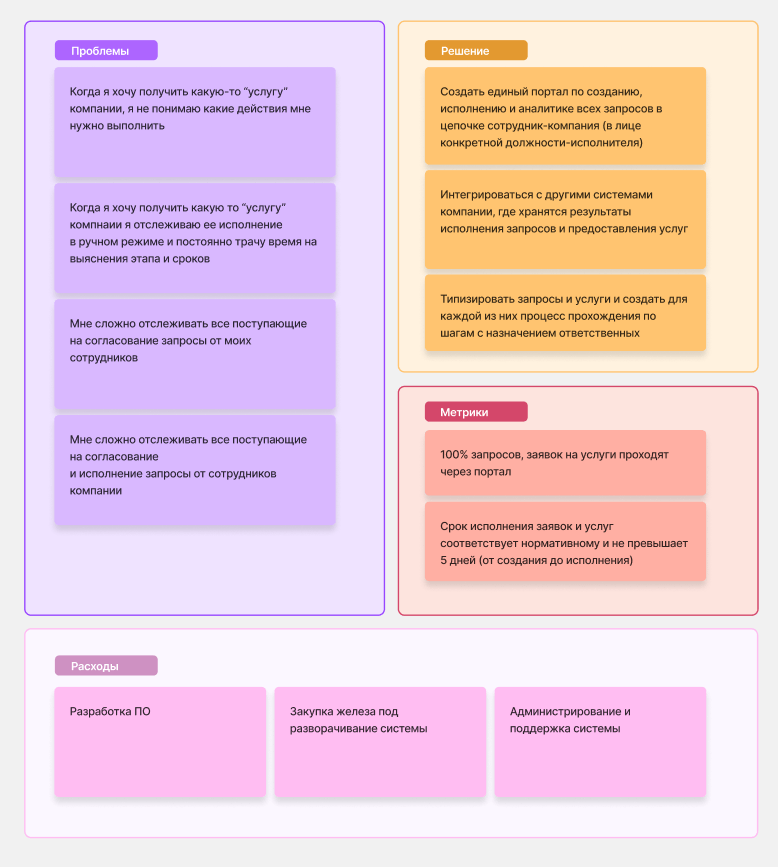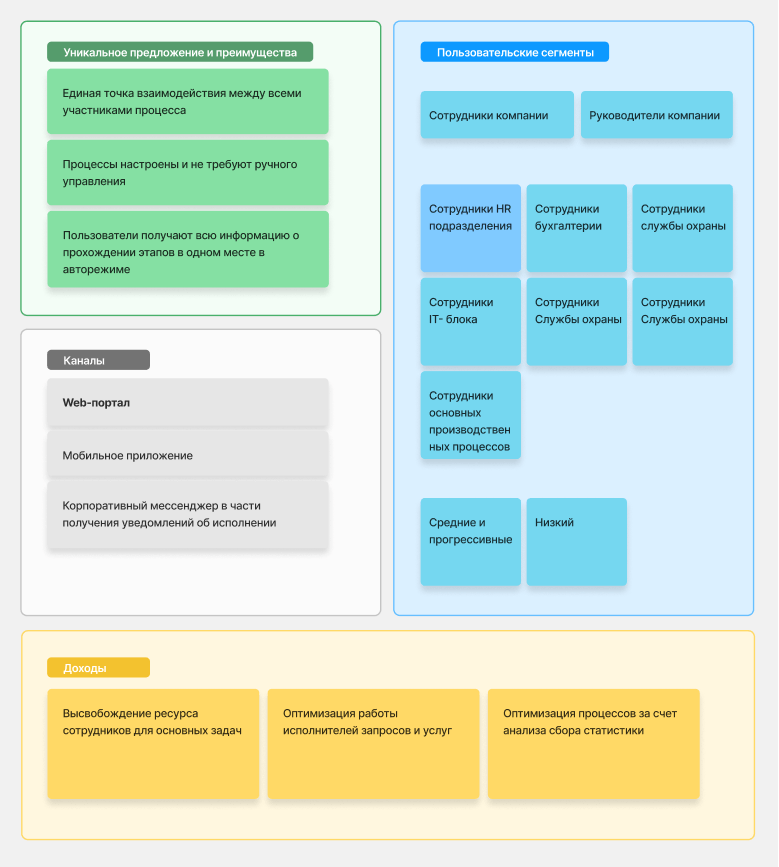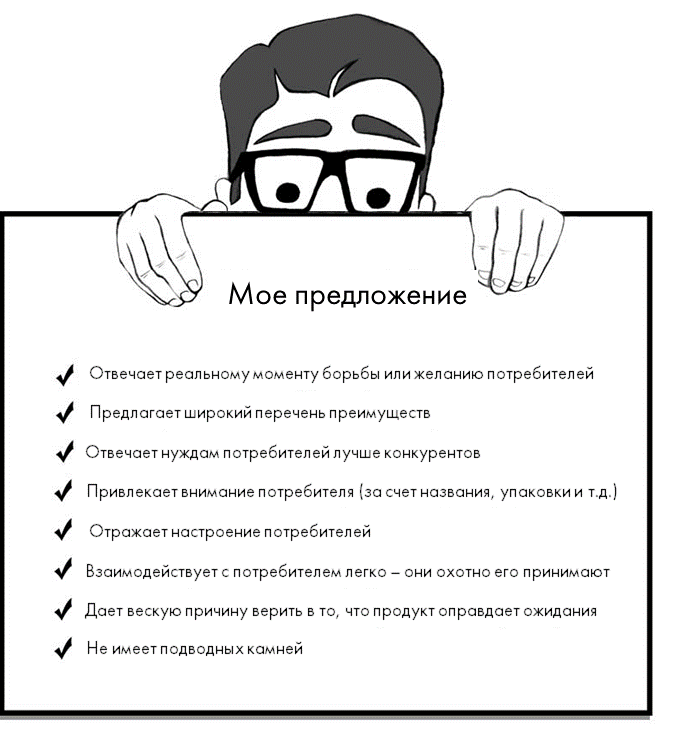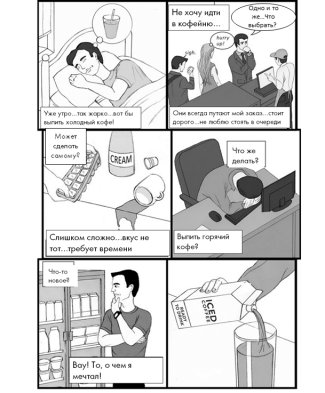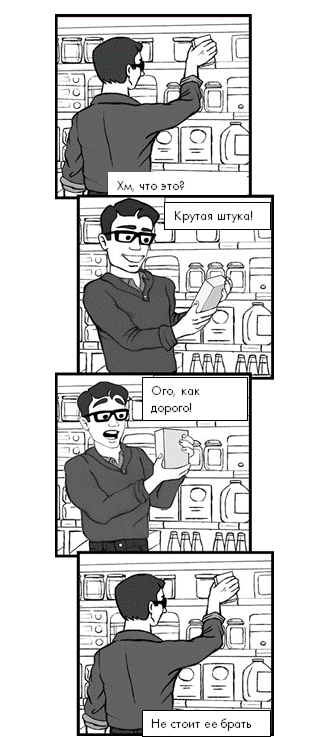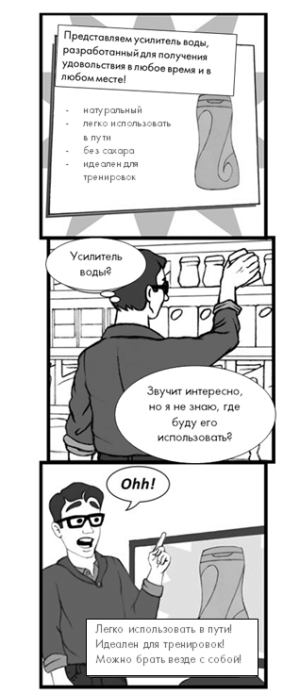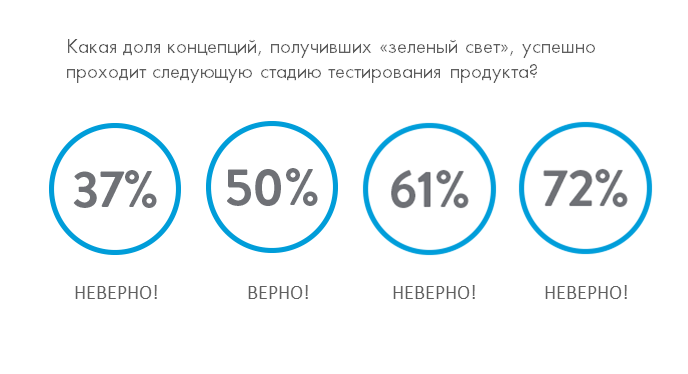Как создать концепцию продукта и написать ТЗ на разработку электроники
Время на прочтение
5 мин
Количество просмотров 62K
Мы продолжаем серию публикаций о разработке и производстве сложной современной электроники. В предыдущих статьях мы честно рассказали вам о нюансах, связанных с дизайном и изготовлением опытных образцов, с массовым производством, а теперь самое время перейти к вопросам, с которых начинается разработка конструкторской документации (КД) и от которых зависит успех взаимоотношений между заказчиком и разработчиком — создание концепции продукта и написание технического задания. Это первые шаги на пути к выпуску сложных серийных устройств и программного обеспечения (продукта).
Разработка продукта — это поэтапный процесс, который требует глубоких знаний и серьезной предварительной подготовки. Исключение отдельных фаз проекта увеличивает риски и смещает их, как правило, на финальную стадию серийного производства. А это, в свою очередь, может существенно повлиять на рост затрат по проекту, чаще всего непредвиденных (внебюджетных). Поэтому важно шаг за шагом пройти все этапы (некоторые из них могут повторяться итеративно, это нормальный процесс создания технически сложной и конкурентоспособной продукции).
Вот типовой список основных задач по разработке электронного устройства:
- Создание концепции продукта
- Техническая и коммерческая проработка
- Разработка электронного устройства
- Сборка и верификация опытных образцов продукции
- Подготовка к производству и выпуску установочной партии
- Серийное производство продукции
- Гарантийное и послегарантийное обслуживание
Сегодня мы рассмотрим два первых пункта, а остальные фазы процесса раскроем в следующих статьях.
1. Создание концепции продукта
Именно на этом этапе идея нового устройства принимает очертания коммерчески успешного продукта. Идет оценка конкурентов и составление сравнительной таблицы — карты технического уровня (КТУ). Проходит выбор оптимального сочетания функционально-технических характеристик продукта и определяется бизнес-модель всего проекта.
Технические эксперты разрабатывают технико-коммерческое предложение и концепт-дизайн продукта с описанием его преимуществ и функциональных особенностей. В это же время бизнес-аналитики создают бизнес-план. На этой стадии могут проводиться дополнительные маркетинговые исследования, поиск инвестиций и другие активности, основная цель которых — получить максимально приближенную к реальности «картинку» жизненного цикла продукта.
Концепция изделия может содержать следующую информацию:
- Функциональное описание устройства и описание решаемых задач
- Техническое описание устройства
- Описание эксплуатационных характеристик
- Предварительные эскизы и/или фотореалистичные изображения устройства
- Маркетинговый план с описанием:
- Прямых и функциональных конкурентов устройства
- Целевой аудитории
- Рынков сбыта и зависимостей
- Типовых сценариев использования
- Предполагаемой бизнес-модели
Результаты этапа: технико-коммерческое предложение на разработку устройства, а также пакет документов, отражающий концепцию продукта (она может незначительно изменяться на последующих этапах).
2. Техническая и коммерческая проработка изделия
На этом этапе разработчики отвечают на вопрос «как будет реализован продукт?». Создается эскизный проект, идет выбор архитектуры устройства. Разрабатывается техническое задание (ТЗ), создаются спецификации, анализируются примеры использования продукта.
Как правило, основные характеристики устройства уже заложены в бизнес-плане, а на уровне ТЗ проходит более подробная техническая проработка изделия. Это универсальный документ, и хотя в России он регламентирован ГОСТами, разработчик может его адаптировать под нужны конкретного проекта.
В отдельных случаях разработка может начаться именно с ТЗ. Например, когда требуется модификация готового устройства, или доработка продуктов в рамках существующей линейки, или бюджет заказчика не позволяет стартовать проект с этапа консалтинга и разработки бизнес-плана. Тогда именно ТЗ становится первым и основным документом с описанием будущего продукта.
В любом случае, ТЗ — это не просто формальное приложение №1 к договору. Для разработчиков устройства этот документ является исходной точкой для планирования и выполнения четко поставленных задач. Для заказчика — это видение цели и список критериев для оценки готового продукта и приемки работ. Именно ТЗ становится основой эффективного взаимодействия без спорных моментов и недоразумений. Крайне важно, чтобы у заказчика и разработчика было общее видение процесса разработки и ожидаемого конечного результата.
Хорошая практика — максимально подробное описание целей и задач проекта, составление списка функциональных возможностей устройства, фиксация предстоящих работ в области разработки программной и аппаратной платформ, определение области поиска дизайнерского решения, указание всех необходимых требований к будущему устройству. Составлением ТЗ занимаются технические специалисты при участии представителя заказчика, в ряде случаев могут привлекаться пользователи будущего продукта.
В процессе подготовки техзадания:
- Уточняются цены на электронные компоненты
- Подписываются соглашения о неразглашении (NDA) с производителями компонентной базы для получения дополнительной технической информации
- Выбираются базовые компоненты
- Идет предварительный расчет себестоимости продукта (BOM) с учетом затрат на производство в разных сериях
На старте разработки не всегда понятно, как реализовать те или иные функции, более подробная информация появляется на последующих этапах, особенно это касается разработки программного обеспечения. ТЗ — это живой рабочий документ, объемы задач в нем могут корректироваться и уточняться, это отразится на оценке стоимости проекта, поэтому важно заранее предусмотреть формат внесения изменений (обычно это делается в виде дополнений с описанием старой и новой редакции ТЗ).
Сроки написания ТЗ зависят от целей проекта. Если это разработка типового устройства с известным набором функций, то первую версию документа по аппаратной части можно получить уже через неделю, для подготовки задания на программную часть потребуется примерно две недели.
В некоторых случаях заказчик готовит ТЗ самостоятельно, тогда разработчику остается только проанализировать и оценить проект. Это значительно облегчает и ускоряет подготовку коммерческого предложения, а также уменьшает потребность в дополнительной коммуникации. Более того, готовое ТЗ позволяет заказчику обратиться со своим проектом в ряд компаний и затем выбрать оптимального подрядчика на основе полученных предложений (оценив его компетенцию с помощью уточняющих вопросов).
Результатом этого этапа становится согласованное с обеих сторон ТЗ на разработку устройства с определенной архитектурой и программно-аппаратной платформой.
Надеемся, наши советы помогут вам в разработке концепции нового продукта и в написании технического задания, а также в построении открытых и продуктивных отношений с исполнителем.
P.S. Пример содержания ТЗ на разработку устройства под ключ — по этой ссылке можно открыть/скачать типовое содержание технического задания на разработку электроники с описанием аппаратной платформы, программного обеспечения, дизайна и конструкции корпуса. Этот документ можно адаптировать под конкретный проект и составить на его основе подробное техническое описание для поэтапной разработки нового устройства под ключ.
В одной из наших статей мы уже писали про цели и преимущества бизнес-анализа. В новой серии материалов мы подробно опишем этапы и особенности его проведения. Сегодня начнем с рассказа про разработку концепции IT-продукта.
О чем эта статья
Любой IT-продукт создается для выполнения бизнес-задачи и получения прибыли. Реализуют эти цели бизнес-аналитики. Они анализируют задачи заказчика и переводят их на доступный для разработчиков язык. В этой статье мы опишем принципы составления концепции продукта, расскажем, как соединить ожидания заказчика и возможности разработки, а также покажем на примере, как концепция продукта помогает достичь желаемой бизнес-ценности при разработке.
Основные характеристики концепции IT-продукта
Концепция продукта — это продуктовая стратегия, которая направлена на достижение конкретных целей, проще говоря, наиболее эффективный путь из точки А в точку Б. Такие цели чаще всего связаны с финансовыми показателями: прибыль, выручка, доля рынка. При принятии решения о запуске проекта также учитываются ресурсы, которыми обладает заказчик. Помимо этих моментов перед началом разработки стоит ответить на следующие вопросы:
Кто и для каких целей пользуется продуктом (персона — архетип пользователя). Если продукт используется в личных целях, то он должен быть простым и интуитивно понятным. Разработка такого продукта ориентируется на паттерны популярных приложений.
Если же продукт используется для коммерческих целей, то он должен быть лаконичным, иметь большую рабочую область и облегчать навигацию пользователя.
Важно точно определить портрет пользователя — оценить его возраст, уровень владения ПК, его задачи, финансовые возможности и даже ограничения по здоровью. Правильное описание клиента упрощает разработку (не надо дорабатывать бесполезные фичи), позволяет снизить затраты и получить качественный фидбек от рынка об эффективности продукта.
Определить характеристики клиента можно с помощью анализа конкурентов, проведения глубинных интервью, опросов предполагаемой целевой аудитории, публичных исследований. Иногда просто достаточно собрать обратную связь после первичного запуска проекта. Перед проведением подобного исследования стоит обсудить с заказчиком целевую аудиторию и концепцию продукта.
В каких условиях используется продукт. Например, разработка мобильного приложения для работника склада подразумевает необходимость учитывать постоянную нестабильность сети (оффлайн режим, технические требования для обеспечения работоспособности продукта), уровень освещенности помещения, наличие электричества или устройств для подзарядки. Каждый из этих факторов ложится в основу проектирования дизайна и внутренних процессов приложения.
Как продукт поможет справиться с проблемами бизнеса и повлиять на его стратегические цели. Разработка мобильного приложения для водителей грузовиков должна ускорить доставку грузов и уменьшить количество просрочек. Эти задачи могут быть решены с помощью конкретных функций в приложении. Команда разработки определяет порядок создания этих функций и механизм реализации всех задач. Такой конкретный план помогает оценить успешность реализованного продукта и всегда соотносить результаты проекта с первоначальными задачами.
Как составить концепцию продукта
Одним из самых эффективных способов разработки концепции продукта является использование бизнес-модели Canvas — модели, которая описывает все процессы по созданию продукта. Этот механизм помогает визуализировать сильные и слабые стороны проекта, облегчает коммуникацию между заказчиком и исполнителями, позволяет увидеть уязвимости продукта до его запуска и рассчитать основные бизнес-риски.
На следующих схемах мы проиллюстрировали как Canvas использовалась при разработке системы управления заявками (см. подробное описание ниже).
Процесс составления концепции продукта проходит следующие этапы:
Определение проблемы и пользовательских сегментов. Сторона заказчика оценивает типичные сложности, с которыми сталкиваются их клиенты, подробно прописывает категории потенциальных пользователей продукта.
Разработка решения и выявление уникального предложения. Заказчик принимает решение о создании конкретного продукта, оценивает возможности его интеграции с другими системами компании и определяет примерный путь пользователей. На этом этапе часто привлекается команда разработки, представители которой могут помочь сформировать видение продукта и предложить конкретные решения по реализации проекта.
Описание метрик. Здесь заказчик определяет критерии эффективности продукта, которые в дальнейшем помогают отследить степень реализации бизнес-ценности.
Анализ каналов взаимодействия. Заказчик описывает все преимущества для клиентов, анализирует портреты пользователей, формирует ключевые каналы связи с аудиторией и прорабатывает возможные недостатки проекта.
Расчет доходов и расходов. Еще одним важным этапом является анализ потенциальных доходов и расходов от реализации проекта. Эта часть создания концепции полностью лежит на плечах заказчика и не влияет на команду разработки.
В процессе создания данной модели участвуют все стейкхолдеры. Они генерируют свои идеи и видение на холст, проводят стратегические сессии по объединению одинаковых аспектов, приоритезируют задачи проекта. Так формируется единая стратегия реализации продукта. Основная ответственность на данном этапе лежит на заказчике, команда разработки выступает в качестве технического консультанта. Эта модель влияет на управление приоритезацией, объемом и стоимостью работ по проектному треугольнику, который мы рассмотрим в следующей статье цикла.
Влияние заказчика на реализацию проекта на примере разработки системы управления заявками
Для эффективной реализации всех целей проекта и оптимального расходования ресурсов команда заказчика должна постоянно взаимодействовать с разработчиками.
Ситуация. Заказчик просит реализовать модуль проектирования процессов, который будет использоваться в качестве задач для пользователей. Заказчик отмечает, что процессы очень сложные и требуется реализация нотации BPMN.
Проблема. После сбора требований становится понятно, что сложность процесса для заказчика — это наличие большого количества шагов (каждый шаг для действия одного лица в процессе согласования и исполнения задачи). С точки зрения системы процесс простой, но имеет много шагов, что на разработку не влияет. В этом случае принимается решение не реализовывать BPMN-движок, потому что он требует выбора стороннего ПО, интеграции с ним, либо разработки собственного, что значительно увеличивает сроки и стоимость проекта.
Решение. Реализовать простую статусную модель и интерфейс для создания шагов процесса и заполнения значения их полей. Это сокращает затраты в несколько раз. При этом бизнес-ценность реализована, соблюден проектный треугольник. Нет лишних функций которые не будут использоваться. В итоге команда разработки продемонстрировала заказчику, что сложные бизнес-задачи можно легко реализовать технически без использования лишних средств.
Связующее звено. Для постоянной связи с командой разработки заказчик может выделить своего продакт-менеджера. Такой специалист работает на стыке бизнеса, маркетинга, дизайна и программирования. Он полностью отвечает за создание и реализацию продукта — от первоначальной идеи до выхода на рынок. Продакт-менеджер определяет ключевые преимущества продукта, стратегию его продвижения и способы монетизации. В идеале он должен уметь балансировать объем проекта, его стоимость и время на реализацию без ущерба качеству конечного продукта.
Итог. Для продуктивной разработки концепции IT-продукта заказчику важно поддерживать постоянное взаимодействие с командой разработки и подробно прописывать все характеристики будущего продукта на основе анализа целевой аудитории. Все эти моменты позволяют разработчикам максимально реализовать основную бизнес-ценность проекта и предложить эффективное решение.
Что такое концепция проекта?
Концепция — это система взглядов на будущий продукт, описывающая видение руководителя проекта (либо группы заинтересованных лиц).
Помните, что все описанное в концепции является гипотезами, а не фактами. И эти гипотезы требуют подтверждения поведением реальных потребителей.
Зачем создавать концепцию?
Концепция — это точка входа в проект
Концепция помогает структурировать начальное описание проекта. Концепция проекта описывает ключевые моменты вашего проекта и позволяет быстро вникнуть в суть проекта.
Как создавать концепцию?
Создавайте концепцию итеративно, т.е. опишите в начале поверхностно свою идею.
По мере поступления новой информации детализируйте концепцию. Задавайте новые вопросы и фиксируйте ответы в концепции проекта.
Кто создает концепцию?
Концепцию должен делать сам руководитель проекта (или product owner). Не нужно делегировать эту работу техническим специалистам и маркетологам. Концепция — это не бриф на разработку сайта и не план продвижения сайта. Концепция — это то, как видит product owner свой продукт.
Из чего состоит концепция?
- Кто есть целевая аудитория проекта и какие проблемы целевой аудитории мы решаем? Можно ли разбить целевую аудиторию на основные типовые сегменты
- Как сейчас потребитель решает свою проблему? Как в идеале он мог бы решать эту проблему?
- В чем наше решение?
- Что для потребителя важно (какие характеристики наиболее критичны) в плане его проблемы?
- В чем наше предложение потребителю? (оффер — цена, условия поставки, оказание услуг, дополнительные условия сделки)
- Как мы планируем достучаться до потребителя? (реклама, каналы)
- Основные характеристики нашего решения (возможности портала, структура)
- Описание объектов и субъектов будущей системы (структура будущего продукта)
- Кто наши партнеры? Кто есть наши стратегические партнеры (те, у кого такая же ЦА, что и у нас)? Кто есть наши партнеры-поставщики (кто будет помогать нам делать и поставлять продукт заказчику)?
- В чем наши гипотезы монетизации? На чем планируем зарабатывать и когда это наступит от момента запуска в эксплуатацию?
- Главные риски проекта. В чем видите основные риски провала проекта? Как их минимизировать (критичность, вероятность)?
Пишите кратко, без воды. Концепция — не про “продать продукт”. Это про то, чтобы как можно четче обозначить ключевые моменты проекта.
Все, что вы написали — это гипотезы и не более того. Они могут меняться по ходу выявления новой информации.
Советы
- Смотрите серию видео на нашем канале Youtube про #провалпроекта
- Прочитайте книгу С.Хёрф “Как создать продукт, который полюбят. Опыт успешных менеджеров и дизайнеров”.
Задание.
- Создайте файл концепции своего продукта
- Покажите свою концепцию хотя бы 1 представителю целевой аудитории. Соберите его комментарии по документу.
6 правил разработки концепции нового товара
Разработка концепции нового товара – важнейший этап, лежащий в основе успешного запуска инновации. Неудачная концепция может испортить яркую идею и помешать ее реализации. С другой стороны, хорошо прописанная концепция может стать надежной базой для всей последующей работы: от разработки товара до его выведения на рынок.
Под концепцией товара понимается система представлений предприятия – изготовителя о создаваемом товаре и его рыночных возможностях.
«Концепция нового товара — научно обоснованное и опирающееся на практику представление о том, каким должен быть новый товар. Исходит из того, что новый (проектируемый) товар должен отвечать потребностям, которые сформируются к моменту, когда изделие выйдет на рынок».
Концепция товара исходит из того, что новый товар должен отвечать потребностям, которые сформировываются к тому моменту, когда товар выйдет на рынок. То есть, при разработке концепции необходимо прогнозировать новые потребности, которые будут сформированы у потребителя к моменту выхода товара на рынок.
Тестирование концепций товара предполагает изучение реакций потребителей на основные идеи нового продукта. В ходе тестирования определяется, насколько новый товар отвечает потребностям сегмента. На этапе тестирования товар обычно существует только в форме описания, а иногда в виде рисунка или макета.
Проверить насколько подготовленная концепция товара готова к тестированию помогут следующие 6 правил.
1. Используйте контрольный список
Новый товар будет успешным, если потребитель поверит в возможности вашего товара. Чтобы мыслить как потребитель, воспользуйтесь контрольным списком характеристик, основанным на проверенной модели факторов успеха.
Контрольный список к разработке концепции нового товара
2 Четко формулируйте обстоятельства, в которых у потребителя возникает проблема
Успешные инновационные товары помогают решить проблему, которую или невозможно решить существующими товарами, или необходимо идти на компромиссы, выбирая из нескольких неидеальных решений одно.
«Концепции, четко и подробно описывающие подобные целевые ситуации (кто ведет эту борьбу, а также когда и где), оказываются на 58% успешнее тех, которые не содержат подобной информации».
формулируйте обстоятельства, в которых у потребителя возникает проблема
Чтобы показать, как товар с его ключевыми характеристиками и преимуществами решит проблему потребителя, поможет описание ситуации, в которой находится потребитель в условиях выбора товара.
Концепции с подробным описанием обстоятельств появления проблемы потребители при тестировании воспринимают как:
- более инновационные,
- более актуальные,
- обладающие преимуществом над другими подобными продуктами,
- представляющие большую ценность.
Объясните, как именно новый продукт будет решать проблемы потребителя:
- Как ваше предложение поможет потребителям с легкостью достичь того, над чем они так долго бились?
- Какие уникальные научные или технологические достижения используются в новом продукте?
- Какие особые компоненты включены в продукт?
Ответы на эти вопросы укрепят доверие к вам и обеспечивает конкурентное преимущество.
3 Усильте желание потребителя получить ваш продукт
Проверьте соответствие предполагаемой цены и воспринимаемой ценности.
Наиболее трудный вопрос в контрольном списке звучит следующим образом: «Действительно ли у значительного числа потребителей существуют проблемы, для которых мое предложение сулит решение?»
Тем не менее, даже в том случае, если идея вашего продукта действительно отвечает неудовлетворенной потребности или желанию потребителя, концепция нового товара может быть холодно воспринята потребителем по следующим причинам:
1 Несоответствие ожидаемой цене.
Потребители могут быть в восторге от вашей идеи, и им, несомненно, необходимы заявленные в ней преимущества, но если цена не будет соответствовать воспринимаемой ценности, идея им может не понравиться. И хотя цену следует устанавливать уже на завершающем этапе процесса разработки продукта, следует с самого начала помнить о том, что она может в итоге перевесить все предлагаемые этим продуктом преимущества.
2 Неудачные формулировки в описании концепции товара.
Описание идеи представляется довольно простой задачей, однако в действительности может оказаться крайне сложно понять, какой язык и какая формулировка фраз найдут отклик в сердцах потребителей. Неудачное описание отличной идеи может привести потребителей в замешательство, заставляя их задуматься над вопросом, какой же товар им представляют, и почему он так необходим именно им. Тестирование разных вариантов текста и визуальных материалов поможет вам представить свою идею наилучшим образом.
У «оптимизированных» концепций вероятность успеха в плане соответствия потребностям и желаниям потребителей на 76% выше, чем у не оптимизированных.
4 Приведите концепцию товара в соответствие со своим маркетинговым планом
Концепция должна содержать всю информацию о характеристиках, которыми будет обладать товар после появления на рынке.
Концепция должна содержать всю информацию о характеристиках, которыми будет обладать товар после появления на рынке. Однако, необходимо предусмотреть, как вы будете сообщать потребителю о характеристиках и преимуществах вашего инновационного товара.
Возможные проблемы могут заключаться в следующем:
- У вашего продукта маленькая упаковка, на которой не хватает места для описания.
- У вас очень ограниченный бюджет на рекламу.
- Вы запускаете по-настоящему революционный товар, преимущества которого могут потребовать подробного объяснения, чтобы убедить потребителя.
Разрабатывайте концепцию с учетом реальной ситуации, принимая во внимание потенциальные трудности с продвижением продукта и заранее продумывая маркетинговую поддержку, которую вы сможете обеспечить ему в будущем.
В проектах с ограниченной маркетинговой поддержкой бывает особенно сложно донести до потребителя конкурентные преимущества продукта.
Даже при наличии широкой поддержки добавление больших объемов информации в концепцию не всегда приводит к лучшему результату. Потребитель может запутаться в нагроможденных фразах и упустить из виду наиболее привлекательные аспекты вашего предложения. Это может отрицательно повлиять не только на успех рекламы вашего товара, но и в целом снизить желание совершить покупку.
В ходе тестирования «концепции с рекламной поддержкой» должно быть предоставлено столько же информации, сколько могла бы сообщить упаковка и реклама.
При тестировании «концепции без рекламной поддержки» информации должно быть столько, сколько можно разместить на упаковке продукта.
5 Работайте в команде генерируя идеи для нового товара
Преимущества совместной работы могут показаться не очевидными, но когда речь идет о разработке концепции, привлечение большего числа людей позволяет создавать более удачные и более привлекательные для потребителя концепции.
«В среднем, команды из шести и более человек создают концепции, которые на 58% более привлекательны для потребителей в сравнении с изначальными идеями и «интуитивными» попытками самостоятельных разработок. И, наоборот, команды из двух или одного человека (наиболее распространенный вариант) создают концепции, лишь на 16% более привлекательные, чем их первоначальный вариант».
Помимо увеличения числа сотрудников, работающих над концепцией, более высоких результатов можно достичь путем привлечения в команду людей с разными взглядами и разным профессиональным опытом. Например, группы, в составе которых есть сотрудники, не входящие в отдел маркетинга, разрабатывают более привлекательные концепции, чем группы, состоящие исключительно из маркетологов.
После создания концепции нового товара и удачного тестирования его у потребителей, необходимо начать работу по разработке нового товара и выведению его на рынок. Наличие предварительного плана, в случае удачного тестирования концепции позволит быстро приступить к его реализации. У вас должны быть установлены точки контроля, позволяющие регулярно контролировать выполнение плана, вплоть до выпуска продукта на рынок. Удачная концепция нового товара обеспечивает отличный старт, но требует не менее тщательного исполнения.
Текст статьи переработан. Рисунки и первоначальный текст — Nielsen
Prelude to the Process Chapters
Rex Hartson, Pardha Pyla, in The UX Book (Second Edition), 2019
5.6.1 What’s in a Product Concept Statement?
An effective product concept statement answers at least the following questions:
- ■
-
What is the product or system name?
- ■
-
Who are the users?
- ■
-
How will they use it?
- ■
-
System: What problem(s) will the system solve (broadly including business objectives)?
- ■
-
Product: What are the major attractions to, or distinguishing features of, this product?
- ■
-
What is the design vision and what are the emotional impact goals? In other words, what experience will the product or system provide to the user?
Example: Product Concept Statement for the Ticket Kiosk System
The TKS will replace MUTTS, the old ticket retail system, by providing distributed kiosk service to the general public. This service includes access to comprehensive event information and the capability to rapidly purchase tickets for local events such as concerts, movies, and the performing arts.
The new system includes a significant expansion of scope to include ticket distribution for the entire MU athletic program. Transportation tickets will also be available, along with directions and parking information for specific venues. Compared to conventional ticket outlets, the Ticket Kiosk System will offer increased (24/7) access, reducing waiting time, and far more extensive information about events. A focus on innovative design will enhance the MU public profile while fostering the spirit of the MU community and offering customers a quality experience. (128 words)
Iteration and refinement. Your product concept statement will evolve as you proceed with the project. For example, “far more extensive information about events” can be made more specific by saying “extensive information including images, movie trailers, and reviews of events.” Also, we did not mention security and privacy, but these important concerns are later pointed out by potential users. Similarly, the point about “focus on innovative design” can be made more specific by saying “the goal of innovative design is to reinvent the experience of interacting with a kiosk by providing an engaging and enjoyable transaction experience.”
Concept statements for large systems. For very large systems, you might need a system concept statement for each major subsystem, if each subsystem has its own goals and mission statement.
Read full chapter
URL:
https://www.sciencedirect.com/science/article/pii/B9780128053423000059
Tools For Chemical Product Design
F.P. Bernardo, in Computer Aided Chemical Engineering, 2016
3.2 Integrated Product/Process Design
Once a basic product concept is selected, further development should integrate the process function and thus consider product/process interdependency. In terms of the optimization problems previously presented, it is likely that one begins with a sequential approach, first solving the product design problem (12.6) and then using its solution S1={d1∗,x1∗,z1∗} as input to problem (12.7), of which solution S2={d2∗,z2∗} is the first design of the manufacturing process. In a later, more detailed design stage, both property and process functions are completely quantified, and one may then fully integrate both problems in a single problem like (12.5), of which solution S12 corresponds to an optimal balance between product and process aspects. The solutions resulting from the sequential approach S1 and S2 clearly make up a feasible solution to the integrated problem (12.5). Therefore, the integrated solution S12 is better than or equally good as the sequential solutions. In terms of the global objective F, one may then write: F(S12) ≥ F({S1,S2}).
Product/process interactions and trade-offs may be systematically studied using multiobjective optimization techniques applied to the integrated problem (12.5). In particular, nondominated (Pareto) solutions, regarding two competing objectives, such as product quality L versus manufacturing costs C, may be obtained using two common techniques: the method of weights or the ε-constraint method.
In the first case, L and C must be expressed in the same basis (e.g., EUR per kg of product), and a global objective is defined as a weighted sum of the two conflicting objectives [this approach is already somehow implicit in formulation (12.5)]. The product/process optimization problem is then solved for different values of the weights.
In the ε-constraint method, one solves the problem:
(12.10)minC
s.t.
L≤ε,
for different values of ε (or, equivalently, the problem min L, subject to C ≤ ε). When using this approach, besides the Pareto curve, one generates additional relevant information. First, the Lagrange multiplier of the constraint L ≤ ε at the optimum solution C∗ (where the constraint is active) is λ = dC∗/dε. This is a rigorous measure of the price one has to pay to produce a product with higher performance. Second, when problem (12.10) is solved for decreasing values of ε, one may reach a limit below which the problem is infeasible. This is the maximum product performance (minimum quality loss) that is attainable with the production process being considered. These topics will be illustrated by the example of Section 4.2.
Read full chapter
URL:
https://www.sciencedirect.com/science/article/pii/B9780444636836000125
Making It Real
Karen Holtzblatt, Hugh Beyer, in Contextual Design (Second Edition), 2017
Abstract
In Contextual Design we drive product concept and structure from a deep understanding of the user’s world. Once the User Environment Design and Interaction Patterns are defined we have a working hypothesis of what we think will deliver value to the target users. But we don’t know if that is true—and our high-level design is likely to be missing lower-level details. All these are best tested and worked out with the user during paper prototype interviews. Furthermore, the result of any design process will likely generate more than a team can ship in a reasonable timeframe. In this chapter, we introduce the steps needed to make the product real and define a release that will deliver value. To do that the team needs to validate and iterate the design with users and then plan a rollout strategy that delivers the concept in useful, product-sized chunks. Last we talk about how to set up and run the overall Contextual Design project providing practical advice and perspective.
Read full chapter
URL:
https://www.sciencedirect.com/science/article/pii/B9780128008942000168
Storyboards
Karen Holtzblatt, Hugh Beyer, in Contextual Design (Second Edition), 2017
Storyboards are based on the vision and the product concepts, follow the structure of a consolidated sequence model or Day-in-the Life model, and pull implications from other models and the affinity as necessary. The vision produces the core product concepts to be developed and the Cool Drilldown refines them to deliver additional value. The vision defines how the users’ lives are changed with that new technology; the consolidated models define the underlying structure of user actions, the strategies they use to accomplish it, and the intents that they are trying to achieve. The storyboard shows how they can achieve those intents with the new invention, extending or replacing their strategies and structure as appropriate.
Create a set of core storyboards before designing the product structure
Read full chapter
URL:
https://www.sciencedirect.com/science/article/pii/B9780128008942000132
Prioritization and Rollout
Karen Holtzblatt, Hugh Beyer, in Contextual Design (Second Edition), 2017
In Contextual Design we plan our rollout based on the product concepts we identified after visioning, as enriched during the Cool Drilldown, worked out with storyboarding, captured in the User Environment Design and Interaction Patterns and refined through iterative prototyping. The resulting User Environment Design now represents the full product concept, based on the team’s understanding of the users’ world. It is the basis for breaking down the overall concept into parts which can be shipped in a series of releases or divided among teams or individuals for parallel development. Because the User Environment Design shows all parts of the product (or suite of apps and products) in relationship to each other, it’s a basis for planning as well as a basis for design. It also has the Interaction Patterns and example interfaces from the prototypes available to help envision how the defined function should be laid out. Together these artifacts act as a high-level requirements document appropriate for guiding planning. Recognizing that the team was likely to produce more than could be shipped in a single release, the team did not need to specify every detail of the design. So the User Environment Design is at the correct level of definition to be used as a planning tool.
The User Environment Design is a planning tool
Read full chapter
URL:
https://www.sciencedirect.com/science/article/pii/B9780128008942000181
Ideation
Karen Holtzblatt, Hugh Beyer, in Contextual Design (Second Edition), 2017
Identifying product concepts
The visions imply new product concepts. Any significant product is composed of multiple feature sets, app suites, and related services that work together to deliver value. The visions contain these concepts within a story of to-be use: what the future life might look like as transformed by technology. But they will be developed and delivered as coherent product elements which have to hang together coherently. Each product concept holds together and could (in theory) be delivered as its own product. If the team’s only view of their design is as a set of scenarios, they will only see the features—they will not see how the product concepts have their own structure, relationships, and coherence. To build a product the team must alternate between story/scenario reasoning to ensure the coherence of the life of the user and structural/systems reasoning that looks at the product elements as a coherent product. Contextual Design alternates between these two processes, keeping both life and product coherent and in sync.
The final step of the Visioning Session is to identify the product concepts explicitly. Each vision suggests product concepts, but any of those product concepts may have been built up across several of the visions. The vision evaluation makes it easier to identify the coherent product concepts because the evaluation focuses on the vision elements, not the entire scenario. For example, in our travel project the team identified an Idea Collector, a research tool with a collection area for ideas and an app for in-the-moment research; a Trip Planner, a collaborative planning tool for laying out the primary activities of the trip; an Itinerary Builder for making sure all logistics have been handled; and a Travel Companion, an app for taking on the trip to record and share memorable events. These four product concepts work together as a whole solution, but each can be thought about and refined on its own.
A product concept collects features in the vision into coherent chunks of value
2
The team draws each product concept separately, pulling the individual features for that concept from all the visions where it was considered. This is the point when the design ideas people contributed to fix any negatives are considered and incorporated. The team names the product concept and shows the concept in rough wireframe sketches to reveal functions and any automation. Figs. 11.3–11.5 show three product concepts that came out of our travel vision. These are not scenarios at all—they are not stories of use. Their representation is structural, suggesting screens which support the intent of the product concept. The sub-team pulling a concept together does not brainstorm new function or leave out anything from the visions. They are tasked with representing the thinking of the group as it has developed so far. The next steps of the Contextual Design process will start to add detail and depth to these ideas. Sketch the product concept as a simple wireframe.
Figure 11.3. The “Idea Collector” product concept—a way to capture trip ideas as you stumble across them, and organize them later.
Figure 11.4. The “Trip Planner” product concept lets people organize ideas into a coherent trip.
Figure 11.5. The Itinerary Builder supports the process of finalizing a trip—making sure all air tickets, hotel nights, event tickets, and other necessary logistics are taken care of.
Multiple product concepts help you define a roadmap
Identifying positives and negatives encouraged the team to think of each vision not as a monolithic whole, but as a grab-bag of parts. Identifying and sketching out the product concepts helps them bring these parts back together in coherent units that can be designed and delivered together. It’s likely that the final vision will describe more than can be shipped in a single version, but that’s all right—it means the team will be able to plan a rollout strategy which they can use to drive delivery over several versions. Even when you are focused on a short-term deliverable—say, your next update is due to ship in 6 months—you’re better off thinking and Visioning widely first. Then you can either synthesize and pick out a few good features for the deadline, or you can vision widely and then vision explicitly for a 6-month deliverable. You’ll find you automatically pull in ideas from the wider visions to put together a coherent short-term plan once you do the inevitable trimming. And you’ll know how what you do in the short term advances your long-term roadmap. In Chapter 18 we discuss prioritization and rollout.
This step results in a well-defined set of product concepts, each with a clear purpose in the user’s life, delivering value to the user in a way that is within the mission of the business. These product concepts feed the next phase of ideation. This is also a good time to share the vision with management stakeholders to check direction.
Visioning on your own
How you do Visioning when you’re on your own depends on your situation. If you’re in a start-up or small company so the number of people available is small but the scope is still large, do a full Visioning Session with the other stakeholders. This is your opportunity to build consensus and a shared direction, and it’s worth it to bring everyone together for a half day to a day.
The catch is, Visioning works because it’s based on user data in the Wall Walk. So you’ll need to pull together the data you have and put it up on the wall. It doesn’t have to be fancy—drawn sketches are fine, if they’re neat—and you can pull together organizational knowledge as well as actual field data. Just make it clear which is which. Do the Wall Walk, Visioning, and Plusses and Minuses together—you can then clean up the vision and identify product concepts on your own, reviewing them with stakeholders afterward.
If your organization is into workshops, design sprints, or other one-half to one day events, fit Wall Walks and Visioning into the existing practice. Use the models to communicate the data and spend a little time cleaning them up, using our communication design principles—visually oriented designers will appreciate a well-designed model. Create an interactive event using the models to facilitate design thinking and everyone will get value out of it.
If you have a small-scoped part of a larger design, it may not make sense to do Visioning as a process. Instead, use the same process on your own or with a codesigner. Sketch options, consciously put each aside and do a different alternative. Do explicit plusses and minuses even when you’re on your own. Then pull the best parts together and sketch a consolidated result. Don’t worry about product concepts—you’re almost certainly designing within a single concept.
Whether you do the Cool Drilldown with others depends mostly on whether you have others available who can be useful. The Cool Drilldown depends on a certain design expertise—knowledge of modern interactivity, presentation, and tools; knowledge of the ecosystem of apps and devices; and ability to design for these situations. A business-oriented product manager or tech-oriented developer is not going to be much help with this. So if that’s all you have, you’re on your own. But use the principles to guide your own design—systematically walk through your product ideas, enriching them one concept at a time, and then pull it all together. The process still works.
But if you’re one of a few UX people on a larger project you may be able to help each other. Do the Cool Drilldown as a round robin, looking at each designer’s component on a separate day. That makes addressing the Cool Concepts a whole-product effort, and means that each designer gets help on their part. And if it leads to more consistency and better coordination across the product, no one will complain.
Read full chapter
URL:
https://www.sciencedirect.com/science/article/pii/B9780128008942000119
Chemical Product Design: Toward a Perspective Through Case Studies
Ka Ming Ng, … Kim Dam-Johansen, in Computer Aided Chemical Engineering, 2007
16.2 PHASE 1: PRODUCT CONCEPTUALIZATION
Understanding customer needs (defined or still unrecognized), identifying product attributes, generating product concept, establishing product specifications, and synthesizing processing alternatives are the primary activities for phase 1 (Figure 16.1-1). Consider the air cleaner case study (chapter 12). Because of the widely publicized deterioration of air quality, a firm decides to manufacture a low-cost in-door catalytic air cleaner for home and office. A team with the necessary resources is formed. One of the key materials is a catalyst capable of decomposing VOCs to a very low concentration at room temperature. In research and design, the engineer proceeds to search for the best catalyst available on the market and in the patent literature, and to estimate the product cost. This scenario represents the conceptualization of a typical market-pull product. Often, the firm selects a product which branches out from an existing product line, leveraging its technical know-how and marketing experience. Such a product is referred to as a platform product. Not all product concepts originate from the marketplace.
New materials and/or processing techniques are being developed all the time in universities and research institutes. Most of these developments simply end up as a report in a trade magazine or technical journal. A subset may go for patent filing and eventually become a technology-push product. However, the probability of success is normally very low, the reason being that, without the guidance and support of a commercial firm, the project team can easily loose its sense of direction and commitment.
As shown in Table 16.1-1, products can be classified based on industrial sectors or end users. An obvious advantage of this classification is that similar processing techniques or scientific principles are involved in the design and manufacturing of these products. Thus, interfacial phenomena are highly relevant in the design of personal care products while GMP is of paramount importance in a pharmaceutical plant. Products can also be classified by functional form ranging from molecules to structured/multicomponent products. The latter are usually made up of a mixture of one or more active ingredients responsible for its functionality, and some supporting ingredients for enhancing its performance. Thus, pharmaceutical tablets often consist of active pharmaceutical ingredients and various excipients such as diluent, binder, disintegrant, lubricant, anti-adherent, glidant, pigment, and flavoring. Powder detergents consist of surfactants and various builders such as phosphates, antiredeposition agent, fluorescent whitening agent, corrosion inhibitor, processing aid, fragrance, oxygen bleach, enzyme, fabric softener and suds control agent.
Regardless of the functional form, the product performance, characterized by a set of attributes referred to as the quality factors, is determined by two factors (Figure 16.2-1). The first one is the properties of the ingredients or mixtures (formulations), such as surface tension, viscosity, and so on. An active ingredient is typically selected according to the desired product functionality, while supporting ingredients are chosen to meet other quality factors. For example, a nonionic surfactant is preferred for baby shampoos because it is less likely than anionic or cationic surfactants to irritate the eyes. The fragrance should have subdued intensity for infants. The second factor is the product microstructure, which is characterized by structural attributes such as particle or droplet size distribution, phase volume fraction, dispersion/distribution of one ingredient in another ingredient, etc. For example, the ease of spread of low-fat margarine depends on how the water disperses in oil.
Figure 16.2-1. Factors determining product performance (after Wibowo and Ng, 2002).
For the devices, packages, appliances and equipments discussed in Table 16.1-1, clearly, microstructures have to be broadened to include relevant geometrical features. For example, geometry as well as micro-fabrication is the key in the design of MEMS (micro-electro-mechanical systems) devices. Disposable diaper is made up of several layers – a hydrophobic inner sheet to take in the fluid, an inner core of super-absorbent polymer and fluff pulp, and an outer nonporous film. All of these have to be properly designed to distribute the fluid evenly and rapidly throughout the diaper and to prevent possible leakage under pressure. Similarly, a typical commercial air cleaner (e.g.,www.ncimfg.com) can perform multiple functions – dust removal by using filters and electro-filters, odor removal by oxidizing VOC using a honeycomb impregnated with catalysts, and bactericide using UV light. Of course, as the product expands from the chemical base, the project becomes a multidisciplinary effort with the participation of mechanical engineers, electrical engineers, and others. Although there are numerous examples of successful launches of chemicals based consumer products, it is still not certain if the optimal or best products have been found in any category. Much work is needed, specially model-based work and employing past knowledge and expertise to improve future products through the application of systematic approaches to chemical product design.
Quality factors can be either qualitative or quantitative in assessing product performance. The sensorial qualitative factors such as convenience of use, smell and taste are qualitative. An arbitrary index is assigned to reflect the level of satisfaction which is often determined by an evaluation panel. As pointed out by Hill and Post (see chapter 9), several hundred people participated in the evaluation of the Dove® bar soap. This index is then related to the material properties and structural attributes via psychophysical models. Physicochemical, mechanical and rheological quality factors such as tensile strength, melting point, and viscosity are readily quantified. Table 16.2-1 shows examples of representative performance indices and standard methods of measurement for typical product quality factors. In the pharmaceutical, food and agrochemical industries, product quality management during the process operation is gaining increasing importance. Design and application of on-line monitoring techniques for product quality control (for example, Process Analytical Technology – PAT) therefore needs to be considered in the early stages of product-process design and development.
Table 16.2-1. Performance indices for typical chemical-based product quality factors [5].
Another important activity for Phase 1 is estimation of product cost. To this end, the suitable processing technology and the associated manufacturing cost have to be determined. Many equipment items such as granulators, coaters, laminators, and homogenizers, and processes such as etching, sputtering, and milling have not been covered in sufficient detail in a traditional chemical engineering curriculum. A deeper understanding of the relationship between the design and operations of such equipment and the microstructure/geometry of the product represents a potentially fruitful area of research. Also, the equipment cost database for these processing units is rather incomplete as compared to the well-developed commercial software such as ICARUS (AspenTech) for traditional Chemical Engineering units. Again, this is another area in need of further development.
From the management point of view, it is important to outline all the steps and devise various contingency plans for the entire product development project. For this purpose, the RAT2IO module and the objective-time chart can be of use [9]. RAT2IO stands for resources, activity, time, tools, input/output information, and objective (Table 16.2-2).
Table 16.2-2. Elements of the RAT2IO Module
| Define Objective of the task |
| Specify the input and output Information |
| Identify the Activities to be performed |
| Identify appropriate Tools |
| Identify human and monetary Resources to perform the activities |
| Estimate the Time needed to meet the objective |
Each task in Table 16.2-1 is executed with a clear objective in mind. One has to identify the available input information and the desirable outcomes along with the necessary activities to achieve these outcomes. Execution of such activities requires a competent team with the requisite skills. As all managers know very well, the recruitment, motivation and retention of the best team can be a constant struggle. The availability of financial resources is a necessary but not a sufficient condition. Consider the accessibility of various equipment and software needed for a product development project. In principle, all equipment can be purchased; in practice, equipment acquisition and installation, and operator training can take an excessively long time. It is far better to use existing infrastructures and technology providers, either internal or external of the company, if they are available. It is exceedingly difficult to accurately estimate the time for each task as many stories on project delay and cost overrun can testify. Outsourcing is expected to help complete the development project in a timely fashion. The elements of the RAT2IO module are depicted in Figure 16.2-2.
Figure 16.2-2. Depiction of the RAT2IO Module
To minimize the total project time, from product conceptualization to product launch, one has to go beyond an accurate estimation of the time required to finish each task. Tasks that can be performed concurrently should also be identified. Consider the objective-time chart in Figure 16.2-3, which shows a product development project with four main tasks. Task A is started first while Tasks B and C can be performed in parallel. Each main task such as D can be further decomposed into subtasks such as D1 to D6. Each subtask such as D4 can be further refined into its own subtasks. The objective-time chart is different from the traditional Gantt chart in that, it shows the subtasks in a hierarchical manner and is much richer in content with the RAT2IO module.
Figure 16.2-3. An objective-time chart which breaks down a task into subtasks each of which can be represented by a RAT2IO module.
Whether a task can be performed concurrently with other tasks depends on two factors. One is whether the input information for the activity under consideration depends on the output from other activities. The other is the availability of manpower and equipment. Consider a team that has only one chemical engineer to design both the reactor and the crystallizer. Even though reaction kinetics, solid-liquid equilibrium data and crystallization kinetics can be measured in parallel, the total time for these activities is determined by what the single individual can achieve.
Observation of actual practice indicates that the RAT2IO module and objective-time chart are seldom used fully and explicitly, particularly for new products and processes. Instead, the experienced project manager often guides the team or a subset of the team to execute the necessary activities in a step-by-step manner. The advantage is twofold. First, a lot of information is not known at the start of the product development project. It is better to just define the main tasks and avoid making too many assumptions in order to specify the subtasks. Second, the team members assigned for a subtask are normally specialists for that certain activity. It is far easier to leave the management of the corresponding RAT2IO module to this sub-group from an organizational point of view.
Read full chapter
URL:
https://www.sciencedirect.com/science/article/pii/S1570794607800198
Focus Groups
Chauncey Wilson, in Interview Techniques for UX Practitioners, 2014
Focus Troupes
Focus troupes (Salvador & Howells, 1998) combine elements of theater with group feedback about product concepts. In a focus troupe, short dramatic scenarios showing how a product might be used are presented to an audience of stakeholders, sometimes using professional actors. The stakeholders might be primary users, secondary users, or the design team itself. During the dramatic enactments of product scenarios, the “audience” engages the focus troupe in a dialogue (much like the moderator does with participants in a focus group). The dialogue can involve questions and clarifications about the product and scenario, positive feedback about the product, and comments about problems that might occur. The main advantage of the focus troupe approach is that it provides the audience with more context about a product and how it will be used than traditional focus groups. Another advantage is that the use of theatrical techniques (acting out scenarios and using early prototypes as props) is motivating and involving for participants. Details of the focus troupe method can be found in Salvador and Howells (1998), Sato and Salvador (1999), and Howard, Carroll, Murphy, and Peck (2002).
Read full chapter
URL:
https://www.sciencedirect.com/science/article/pii/B9780124103931000053
Project Planning and Execution
Karen Holtzblatt, … John Zimmerman, in Contextual Design (Second Edition), 2017
We’ve now walked through the entire Contextual Design process. You know how to run an interview, build models, vision, identify new product concepts, refine, and test the design. Along the way we’ve talked about how to run a design team in the context of Contextual Design, using our principles of immersion and design for life to keep the team focused and on track. We have emphasized the role of a collaborating cross-functional team and discussed how to manage different interpersonal styles. Now we step back and briefly discuss key aspects of planning and organizing a Contextual Design project. We cannot emphasize more the value of a person skilled at project leading who can keep the team organized and moving forward, and who can corral participation from whoever is needed. Without that person, nothing gets done. Planning, keeping all the details and people organized, and being very clear on the goals and focus of the project to make sure it stays on track—these are all must-have skills for any Contextual Design team. In this chapter we go over key aspects of organizing the project. These planning aspects are less exciting, perhaps, than the process itself but they can sink a project if not handled well.
Don’t neglect planning if you want to be successful
Read full chapter
URL:
https://www.sciencedirect.com/science/article/pii/B9780128008942000193
Validating the Design
Karen Holtzblatt, Hugh Beyer, in Contextual Design (Second Edition), 2017
This iterative testing starts with rough mockups built using ordinary stationery supplies (Fig. 17.1). These prototypes are quick to build, focus the user on the product concept and structure, and invite the user to codesign. The original work on low-fidelity mockups was done at Aarhus University as part of their research into Participatory Design.1 Karen Holtzblatt adapted these methods to software in her early work on Contextual Design.2 Since then, the technique has been widely popularized.3,4 We’ll describe our approach in a minute, but as you read it, keep your focus on the primary value we see in paper prototyping: the ability to use the prototype to foster a design conversation, not a demo. It’s the interactivity of the prototyping session, where the user is placed in his or her own context, can interact with the prototype like it’s real, and can make changes in real time that gives prototype iterations their power.
Figure 17.1. A sample paper prototype. Parts of the UI are differentiated with sticky notes; information is handwritten so it can be added to or changed with users on the fly. Each trip activity is on a standard-sized Post-it so that they can be manipulated individually, and new ones can easily be added in the interview. The Interaction Pattern for this page is the Dashboard, which is also being tested.
Build paper mockups for every platform you will deliver the product upon
Read full chapter
URL:
https://www.sciencedirect.com/science/article/pii/B978012800894200017X

